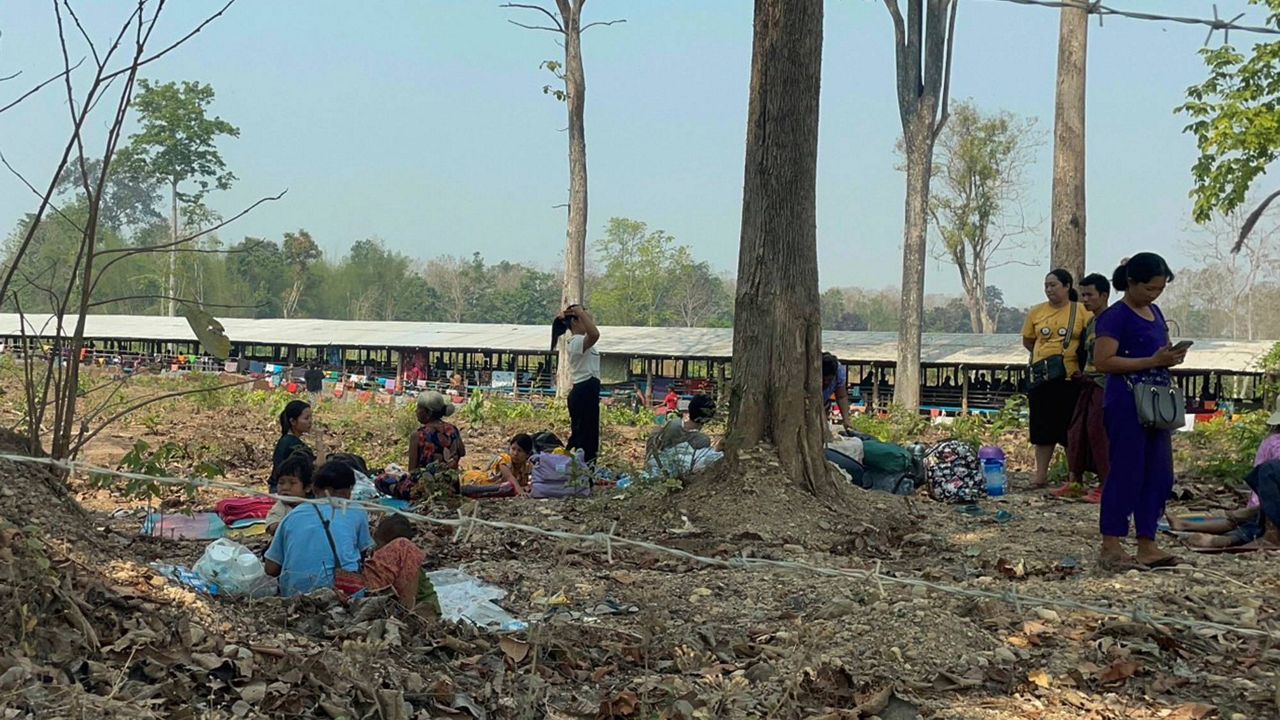More than 5,000 people have fled from eastern Myanmar into Thailand in recent days as fighting between Myanmar's army and armed resistance groups has intensified in the border area, Thai media and officials said Thursday.
At least 5,428 civilians, including more than 800 children, crossed the border by Wednesday night from Myanmar's Myawaddy district to seek refuge in Thailand's Tak province, public broadcaster Thai PBS reported, citing an unidentified security official.
It said they fled as ethnic rebels from the Karen minority, allied with guerrillas of the pro-democracy People's Defense Force, attacked two Myanmar government outposts near the border. The army's regular soldiers are assisted by members of the Border Guard Force, composed of militias of ethnic minority groups allied to the military government.
Myanmar's ethnic minorities have been fighting for greater autonomy for decades, but armed conflict in the country escalated sharply after Myanmar's army ousted the elected government of Aung San Suu Kyi in February 2021. Widespread opposition to the takeover shifted to armed resistance in many parts of the country as pro-democracy forces joined hands with several armed ethnic minority groups.
Clashes and air strikes along the border have triggered a sporadic exodus of Myanmar villagers into Thailand's border provinces, where they are often offered temporary refuge before being sent back home. India has also seen streams of refugees from western Myanmar.
An official from the Thai border district of Mae Sot told The Associated Press that clashes on Myanmar's side of the border were continuing Thursday and gunfire could be heard from the Thai side. The official, who asked not to be identified because he was not authorized to release information, estimated the number of refugees currently under the care of Thai authorities to be at least 5,000.
"We are providing shelter, food and water to them on humanitarian grounds," he said. "We will wait until the situation cools down. When the clashes stop, we will send them back."
The Bangkok Post newspaper said more than 1,000 people fled across the border into Thailand at two locations on Thursday.
A statement issued a day earlier by Thailand's Thai-Myanmar Border Command Center said the authorities in Tak province had provided 10 temporary shelters to host refugees in two border districts, including Mae Sot, a major crossing point.
Tak province's Public Relations Department said on Facebook that the clashes occurred at two sites inside Myawaddy province about 4 miles from the border, causing "several injuries and deaths for soldiers on both sides."
The website of Myanmar's Eleven Media Group reported that according to sources on the Thai side, more than 3,000 people had fled across the Moei River — which marks the border — to escape fighting on Wednesday.
It said they were trying to escape fighting in Myanmar's Shwe Kokko region, which houses a semi-autonomous economic zone hosting a casino and alleged criminal operations where people who have been tricked into working are employed in large-scale internet scams.
Its report said the current round of fighting in the area started on March 25.



